Notes
Sensitivity to Abuse in a Photo Award: Time to Rethink the Impact of These Prizes?
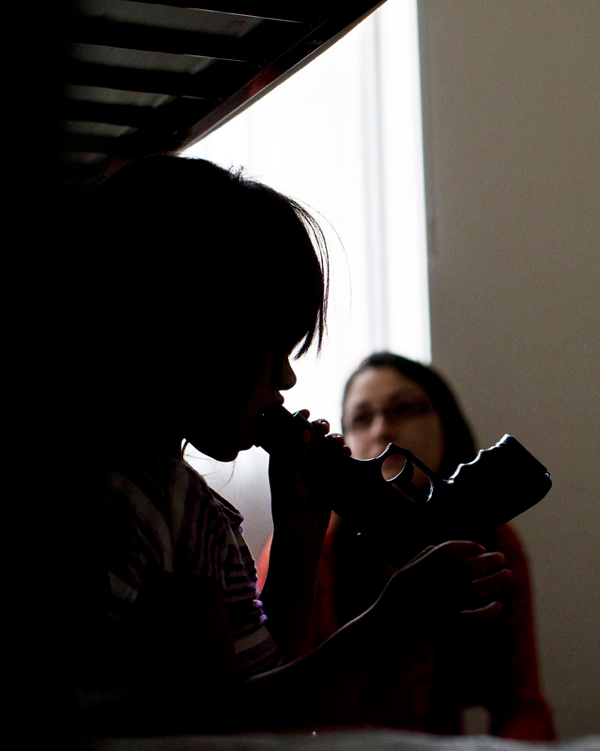
My purpose today is to speak to two stories. The first involves a photographer’s sensitivity in documenting a profound and deadly threat to our society. The second involves editing stories to win prizes.
But let’s put our attention first and primarily where it’s deserved, which is on photographer Nick Oza’s engagement with the epidemic of child abuse and his skill at visualizing that crisis as part of the Arizona Republic’s watchdogging of the state’s troubled Child Protective Services agency. Mr. Oza earned a Picture of the Year “Award of Excellence” the other day for his story titled “Child Abuse & Neglect,” consisting of a twelve photo edit from his extended coverage for the news organization.
There is a lot to appreciate in these photos. Each image represents a quite different entry point into the crisis. Having embedded with officers as well as case workers, Mr. Oza has confidently avoided over-identifying with authorities and adults. If it’s almost too easy to hit emotional buttons, Oza’s pictures are also largely restrained and “documentary,” noteworthy often for an almost unnerving sense of mundanity or intractability.
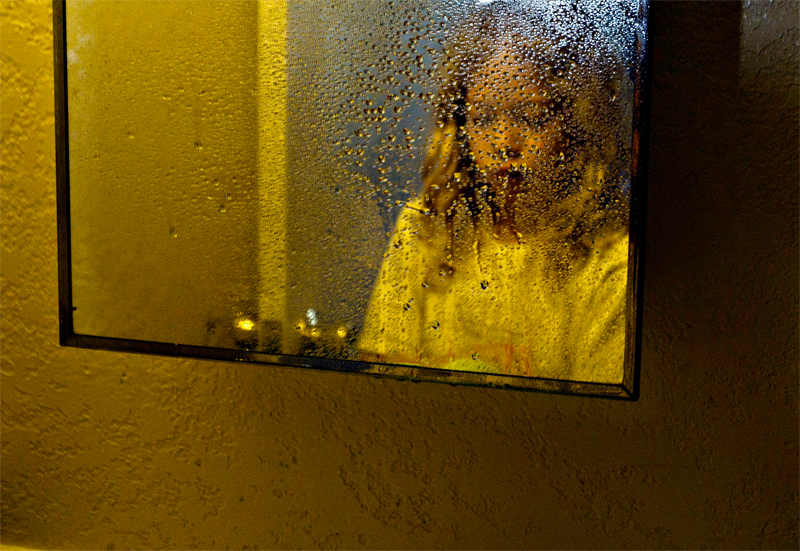
The caption of this photo reads as follows:
Julius McDonald 8, cleans a bathroom helping her grandma. Dawn McDonald adopted her grandson, Julius McDonald 8, and Tobyus McDonald, 7, from CPS.
If the picture represents the caption at face value, what it also leaves in the air is the suggestion that a child, tossed into the system, could possibly end up in a situation where she finds herself put to work.
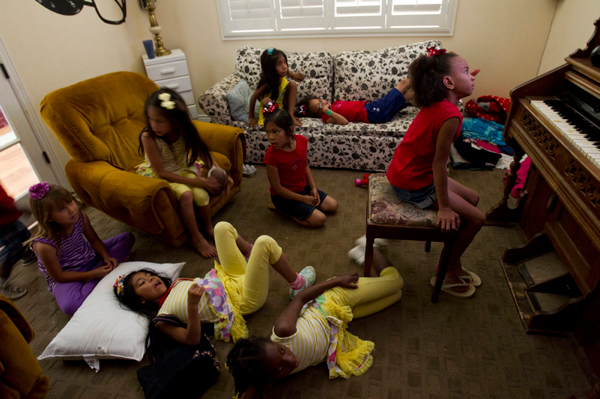
The caption:
Adopted children from three families watch television at Sandy and Lyle Reed’s home.
In this case, you’d wish they were really sitting around the piano rather than being pacified by that latchkey babysitter, the television.
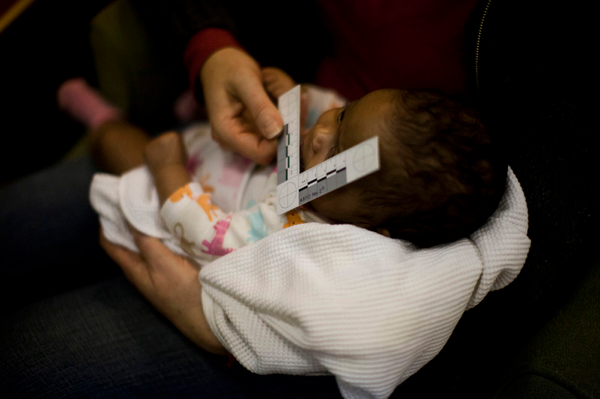
As a Phoenix Police detective measures the injuries of an abused baby, this photo devastates for being every bit as clinical as it is outrageous.
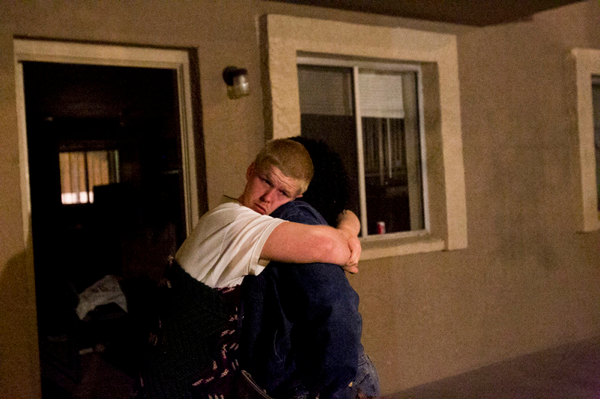
There is a striking intelligence to this photo. To be honest, we hardly ever see images of emotionally disturbed people until they’ve been thrust into the public spotlight for having done something so horrible as to be labeled the incarnation of evil. This, on the other hand, is morally far more complex. (Just a note to Nick, by the way. Why all the typos and the grammar issues in the caption?) Here’s this one:
Dusin Menchue, 18, gets hugs by his neighbors after he called in for hotline for his suicidal thoughts. Menchue, is in CPS system after he was kick out by his family because he sexually abuse his siblings. Many of this teens become homeless after they get out from CPS system.
Given that the photo story is about the system and the genesis of the photo is a cry for help, we’re required to look at Dustin “the child abuser” far more empathically. It might just be me but the scene somehow also brings to mind the cycle of abuse.
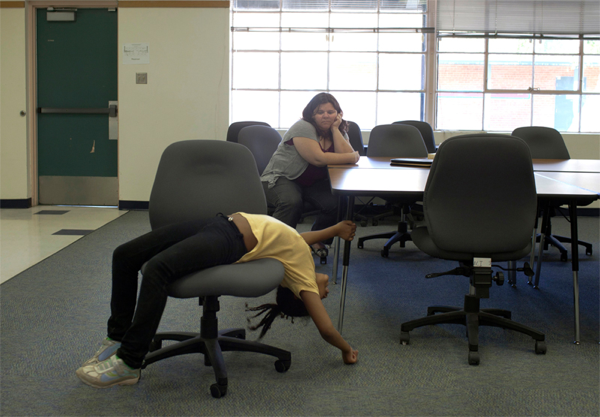
My God, I haven’t been able to stop looking at this photo (the larger version of it on the POY site, anyway) since I first saw it. The caption reads:
CPS investigator Rebecca Wright, interviews a child at her school. The mother has been accused of neglecting the girl.
I mentioned intractability. I can’t tell if this is a portrait of inertia or, more hopefully, what “painstaking” looks like. We all know in our heads, our stomachs, and certainly, our backs, what that space is like where we can’t reach somebody. …And then, how much pain are we looking at when a child’s way of protecting herself is to just let the central nervous system take over?
…But I’ve forgotten something. It’s the very last photo that appears in the POY-winning “Child Abuse & Neglect” edit. The grand finale, if you will.
If you do a comparison, what you’ll find is that the twelve photos in Nick’s Oza’s Picture of the Year-winning edit were distilled from a larger slideshow of 46 images published on the Arizona Republic website. Well, all except one — which is the image you see leading this post of the girl with the gun in her mouth. So the question is, why would this frame only appear in the POY edit — serving, also, as the “closing shot”? Here’s the caption by the way, which puts more emphasis on the role of caseworkers rather than providing some explanation or context for the shocking foreground:
Child Protective Services Caseworker talks to a 6 year old girl asking questions about how her mother and her boyfriend treating her while she plays in a separate room during home visit. CPS keep an eye on the children when parents are abusive to drugs in this case. Caseworkers are scrutinize a lot because of lack of funding and tremendous workload.
Of the myriad of issues that arose from the controversy on Friday over Paolo Pellegrin’s POY- and WPP-winning image, one thing this edit also demonstrates, I believe, is the temptation to pull out all the stops in one’s photo set to try and secure that prize. In Pellegrin’s case, it involved the insertion of the photo of Shane Keller in his award submissions when the photo never appeared in the previously published version of the story.
I want to emphasize, Nick Oza deserves the highest credit for following this issue, and for applying the craft, sensitivity and aesthetic judgement to put a face on a crisis desperately in need of advocacy. At the same time, however, what is the inference to that work and that sensitivity when it’s topped off — especially in the one viewing it will ever have by such a large audience — by an image, one could argue, as potentially abusive to the sublimity of the rest of the work?
Among the various concerns this opens up, the question I wish someone could really answer is whether Nick would still have won this award without the photo of the girl suggestively mouthing the gun barrel. Which leads me to the next concern, which is the value and scale of these awards if it causes shooters, if just in part, in the course of their practice throughout the year, to be gunning for a win?
(Slightly edited for grammar and emphasis.)
(photos: Nick Oza/ Arizona Republic. caption 4: Phoenix Police detective measures and photographs injuries to a boy at Childhelp Children’s Center in Phoenix. Police, CPS, medical personnel and therapists work together at the family advocacy center on child abuse and neglect cases. This boy’s father is accused of beating him and his four siblings.)
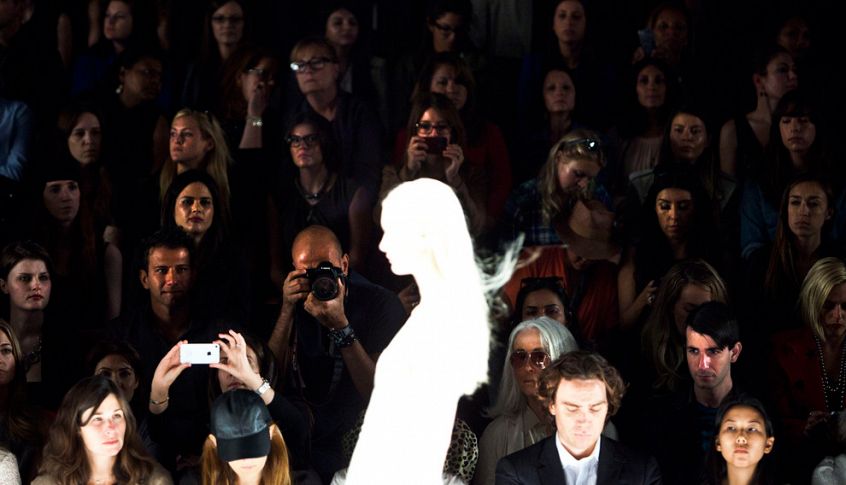

Reactions
Comments Powered by Disqus